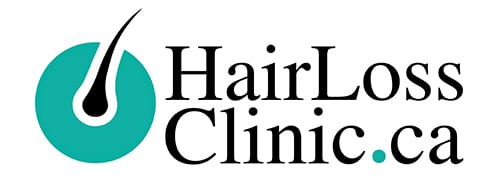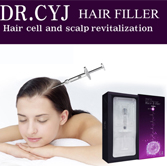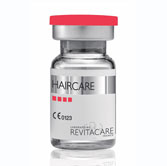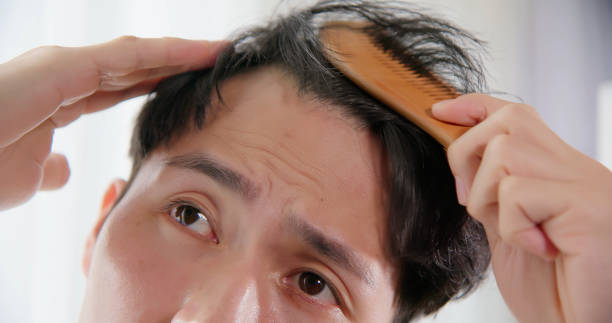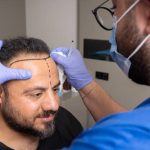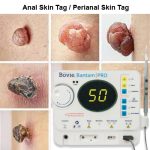May 19, 2023 By simonw Comments are Off alopecia, androgenetic alopecia, balding, baldness, hair loss, hair loss treatment
Table of Contents
Understanding Baldness: Causes, Treatments, and Coping Strategies
Introduction
Alopecia, commonly known as baldness, is a prevalent condition that impacts individuals of all genders, resulting in hair loss and potential psychological challenges. This comprehensive article explores the various causes of baldness, available treatments, and coping strategies for individuals with this condition.
Causes of Baldness
Baldness can be attributed to diverse factors, including genetic predisposition, hormonal imbalances, medical conditions, lifestyle choices, and environmental influences. Understanding the underlying causes can help individuals better manage their hair loss concerns. The primary causes of baldness include:
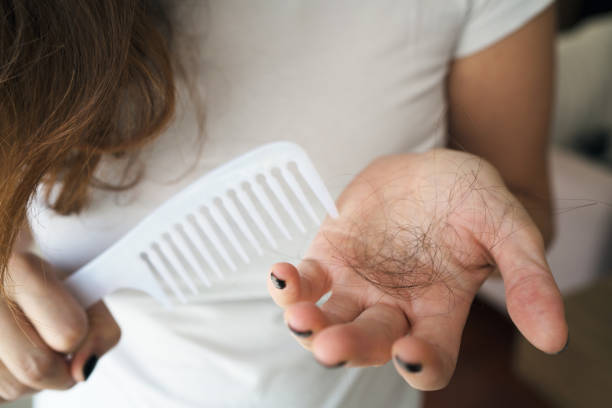
- Androgenetic Alopecia: Androgenetic alopecia, commonly known as male-pattern baldness or female-pattern baldness, is primarily influenced by genetics and hormonal factors. It results in a gradual thinning of hair and receding hairline due to the sensitivity of hair follicles to dihydrotestosterone (DHT), a hormone derived from testosterone.
- Hormonal Imbalances: Hormonal changes, such as those occurring during menopause, pregnancy, or thyroid disorders, can disrupt the natural hair growth cycle and contribute to hair loss. Fluctuations in estrogen, progesterone, and thyroid hormones can impact the health of hair follicles.
- Medical Conditions: Certain conditions, including autoimmune disorders (like alopecia areata), scalp infections, and skin disorders, can lead to temporary or permanent hair loss. These conditions often involve the immune system’s misidentification of hair follicles as foreign bodies, resulting in their attack and subsequent hair loss.
- Nutritional Deficiencies: Inadequate intake of essential nutrients, such as vitamins (e.g., biotin, vitamin D, vitamin E) and minerals (e.g., iron, zinc), can weaken the hair follicles and contribute to hair thinning or loss. Therefore, a balanced diet rich in these nutrients is crucial for maintaining healthy hair.
- Stress and Lifestyle Factors: Chronic stress, unhealthy dietary habits, smoking, excessive alcohol consumption, and certain hairstyling practices can increase the risk of hair loss. Anxiety can potentially disturb the natural hair growth cycle, causing hair to shed or hair follicles to undergo premature miniaturization.
Available Treatments for Baldness
Numerous treatment options are available to address baldness, from medical to cosmetic interventions. Treatment choice depends on the underlying cause, the severity of hair loss, and individual preferences. Common treatments for baldness include:
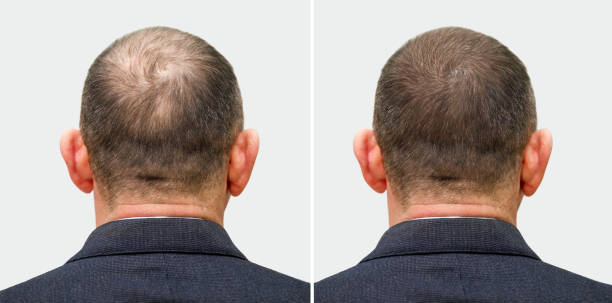
- Medications: FDA-approved medications, such as minoxidil (Rogaine) and finasteride (Propecia), can help slow down hair loss, promote hair regrowth, and inhibit the effects of DHT on hair follicles. These medications come in different formats, such as topical solutions and oral tablets, providing a range of options for administration.
- Hair Transplantation: Hair transplantation involves a surgical approach where hair follicles are extracted from donor areas of the scalp, characterized by dense hair growth, and then transplanted into areas that exhibit baldness or thinning hair.
- Low-Level Laser Therapy (LLLT): LLLT utilizes red or near-infrared light to stimulate hair follicles, improve circulation, and promote growth. LLLT devices, such as laser combs or helmets, emit specific wavelengths of light that penetrate the scalp and stimulate cellular activity in the hair follicles.
- Scalp Micropigmentation (SMP): Scalp micropigmentation, also known as a hair tattoo, is a non-invasive cosmetic procedure that involves depositing pigments into the scalp to create the appearance of hair follicles or provide the illusion of a closely shaved head. It can help individuals achieve a fuller-looking head of hair or camouflage bald spots.
- Topical Treatments: Topical treatments, such as hair growth serums, foams, or sprays, contain active ingredients like minoxidil or natural extracts that nourish the scalp, promote blood circulation, and stimulate hair growth. Applied directly to the scalp, these treatments can be used concurrently with other therapies.
- Platelet-Rich Plasma (PRP) Therapy: PRP therapy consists of drawing the patient’s blood, isolating and concentrating the platelet-rich plasma, and subsequently injecting it into the scalp. The growth factors in PRP stimulate dormant hair follicles, promote tissue regeneration, and encourage hair growth.
- Hair Fiber Products: Hair fibre products are transient cosmetic remedies that seamlessly integrate with natural hair strands, creating the optical illusion of increased thickness and volume. These products contain microscopic fibres that adhere to the hair, adding volume and coverage to thinning areas.
- Nutritional Supplements: Nutritional supplements explicitly formulated for hair health can provide essential vitamins, minerals, and antioxidants that support hair growth and strengthen hair follicles. Ingredients like biotin, zinc, saw palmetto and horsetail extract are commonly found in hair health supplements.
- Wigs and Hairpieces: Wigs and hairpieces offer an immediate solution for individuals seeking to change their appearance or cover extensive hair loss. Individuals can personalize their appearance based on their preferences with the range of styles, colours, and materials available in these products.
- Lifestyle Modifications: Making specific lifestyle changes can help improve overall hair health and minimize the risk of further hair loss. These include following a balanced diet, managing stress levels, avoiding harsh hair treatments, protecting the hair from excessive heat and UV exposure, and practicing good scalp hygiene.
Coping Strategies for Baldness
Coping with baldness involves adopting strategies to maintain self-confidence, embrace one’s appearance, and manage the emotional impact of hair loss. Here are some coping strategies for individuals dealing with baldness:

- Self-Acceptance: Accepting and embracing one’s unique appearance can empower individuals to feel confident and comfortable in their skin, regardless of hair loss. Remember that baldness does not define your worth or attractiveness.
- Hairstyling and Grooming: Experiment with different hairstyles, haircuts, or grooming techniques that work well with your hair type and pattern of hair loss. Seeking guidance from a hair professional who specializes in addressing thinning hair can assist in discovering a hairstyle that accentuates your features and elevates your self-assurance.
- Support Systems: Reach out to your loved ones, friends, or support communities to share your journey, worries, and emotions regarding hair loss. Connecting with individuals who have undergone similar experiences can offer solace, advice, and a sense of community.
- Scalp and Hair Care: Maintain good scalp and hair hygiene using mild shampoos, conditioners, and products suitable for your hair type. Avoid harsh chemicals, excessive heat styling, and tight hairstyles that can further damage or irritate the scalp.
- Scalp Massage: Incorporate regular scalp massages into your hair care routine. Massaging the scalp can improve blood circulation, stimulate the hair follicles, and promote relaxation.
- Embrace Accessories: Experiment with hats, caps, scarves, or headbands to accessorize your look while protecting your scalp from the sun’s harmful UV rays. These accessories can also add a stylish touch to your overall appearance.
- Professional Counseling: Consider seeking professional counselling or therapy to address any emotional distress or self-esteem issues associated with baldness. A therapist can provide guidance, support, and coping strategies to help you navigate the emotional impact of hair loss.
- Camouflage Techniques: Explore cosmetic solutions like hair fibres, scalp concealers, or powders that can temporarily camouflage thinning areas or create the appearance of a fuller head of hair. These products are applied directly to the scalp or hair and can provide immediate coverage and a natural-looking result.
- Emphasize Other Features: Focus on highlighting your other physical features and personal style to shift the attention away from your hair. Experiment with fashion choices, accessories, and grooming techniques that enhance your appearance and confidence.
- Educate Yourself: Dedicate time to educating yourself on the factors contributing to baldness and the available treatment options. Understanding the science behind hair loss can help demystify the condition and empower you to make informed decisions about managing your hair loss.
It’s important to remember that everyone’s journey in coping with baldness is different; what may be helpful for one individual may not be the right approach for someone else. Therefore, finding strategies that resonate with you and align with your unique needs and preferences is essential.
Conclusion
Baldness is a common condition affecting individuals of all genders and ages. Understanding the causes of baldness and available treatment options can help individuals navigate their hair loss journey with confidence and resilience.
There are various approaches to managing and coping with baldness, from medications and surgical interventions to non-invasive treatments and lifestyle modifications. It’s essential to consult with a trichologist or hair loss specialist to determine the most suitable treatment plan for your specific needs.
In addition to seeking professional help, adopting coping strategies such as self-acceptance, exploring different hairstyles, engaging in self-care, and seeking support from others can contribute to a positive mindset and improved well-being.
Remember, baldness does not define your worth or attractiveness. Instead, embrace your unique appearance, focus on self-care, and surround yourself with a supportive network. By cultivating a positive mindset and taking proactive steps, you can effectively navigate the obstacles of baldness, embrace your authentic self, and lead a rewarding life.
Q & A
What causes balding or hair loss?
Balding or hair loss can be caused by various factors, including genetics, hormonal imbalances, medical conditions, and lifestyle choices.
Is balding hereditary?
Yes, balding can be hereditary. Male pattern baldness, in particular, is often inherited from one or both parents.
Can stress cause balding?
While stress alone may not directly cause balding, chronic stress can contribute to hair loss by disrupting the growth cycle.
Are there any effective treatments for balding?
Yes, various treatments are available for balding, including medications, hair transplant procedures, low-level laser therapy, and scalp micropigmentation.
Can balding be reversed?
The extent to which balding can be reversed depends on the underlying cause and treatment method. Some treatments can stimulate hair regrowth, while others focus on improving the appearance of existing hair.
Are there any natural remedies for balding?
Applying essential oils or herbal extracts to the scalp is a natural remedy that may assist in improving the condition of the hair and scalp; however, its effectiveness can differ from person to person.
Can wearing hats or caps cause balding?
Wearing hats or caps does not directly cause balding. However, tight or improperly fitting headwear can lead to hair breakage or traction alopecia over time.
Can diet affect balding?
A balanced diet with essential nutrients like vitamins, minerals, and proteins is vital for maintaining healthy hair. Nutritional deficiencies can contribute to hair loss or thinning.
Is there a cure for balding?
Currently, there is no permanent cure for balding. However, effective treatments and management strategies are available to address the underlying causes and minimize the impact of hair loss.
Can balding affect self-esteem?
Yes, balding can significantly impact self-esteem and body image. Addressing any emotional concerns associated with hair loss and seeking support if needed is essential.
Book Your Free Consultation Today Or Call (647) 492-9093
FREE ONLINE HAIR LOSS ASSESSMENT CONSULTATION
Comments are closed.
